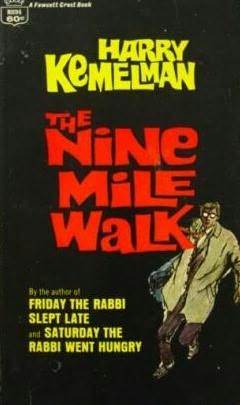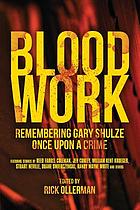I have, as so many others throughout history, considered the problem of the inelasticity of time on my terms. Time seems to gallop only when I want it to slow down so I can enjoy the moment more. On the other hand, when I want time to pick up its trailing skirts and race out the door - largely because the current situation sucks - it sits right down and prepares to do nothing, apparently, forever, with me.
This is also the main problem with the whole mindfulness movement. You know. Always stay present in the moment. Savor everything, because now is all we have. Even if your emotions are rioting like a sack of baboons, do the mantra, calm down, and enjoy the moment:
"Breathing in, I calm myself;
Breathing out, I smile." (Thich Nhat Hahn)
(1) This works very well when I'm already happy on a sunny day, preferably outdoors. It's not nearly as much fun at 4 AM and I'm lying awake, listening to either the baboons chatter or the humming of the universe.
(2) There are some things it's hard to want to be in the moment with, like pain, grief, bad trouble, etc. All of which take up 99% of your thoughts and slow time down to the pace of a snail on a molasses highway.Back when I was getting ready for my hernia operation, I blocked off 2 weeks for recovery. And I had such plans as to what to do with the time! I was going to read, write, revise, sit out on the porch, loll, and generally make wonderful use of some unexpected free time.
HAH!
The realistic time schedule for surgery:
- Week before surgery: Prepare. Do laundry, grocery shopping, errands, extra blog posts, etc. In other words, do anything you'd do to prep for vacation, only this time there won't be any fun at the end.
- Morning of surgery: Experience ever-increasing apprehension as a variety of people in scrubs poke, prod, and stick you with needles. There's also the little discussions with them as they do these things - have you every experienced any problems with having a long hose stuck down your throat and left there for an hour or two? (I'm having problems just hearing about it right now.) Personally, I think this is their way of getting you so fed up that you are actually relieved when they start wheeling you into the operating room, because you know you'll finally get knocked out and you don't have to hear all the grotty details.
- Day of surgery: I Am A Zombie.
- Day after surgery: I Am A Zombie, but things hurt more.
- Week after surgery: I am going to be able to stand up straight again, aren't I? Without it feeling like I might spill something, like my guts? Will this glue really hold until everything heals? Oh, and why does eating wear me out? What happened to my energy? I'm going to take another nap now. What happened to my back and my neck? Why am I having more pain there than at my incision? Hal, would you open the pod-bay doors now?
- (Visit to chiropractor to get adjustment, along with the information that, once the anesthesiologist knocks you out, they not only put the tube down your throat but they move you around to make their access to your body easier, irrespective of whether your back/neck naturally move like that.)
- NOTE: At no point, from the day of surgery until about the end of the 2nd week, did I truly want to practice mindfulness for more than 5 minutes. All I wanted was to escape.
- 2nd week after surgery: Recovery, recovery, recovery. Reading, eating, sleeping, walking. Laundry recurs. So do groceries. Do blog post.
- 3rd week after surgery: I finally reopen a story and start working on it.
Now, here's the remarkable thing. The schedule for vacation is remarkably similar:
- Week before vacation: Prepare. Do laundry, grocery shopping, errands, extra blog posts, etc.
- Day leaving for vacation: Experience ever-increasing apprehension as you crowd into the economy section of a plane with a variety of people and only wish you had some sort of sedative to get you through this oxygen-free trip. Mindfulness is not helpful.
- First night of vacation: I Am A Zombie.
- First week of vacation: Hugely enjoyable, overwhelming, walking, reading, eating, drinking, sightseeing, sleeping, sometimes all at once.
- Second week of vacation: Man, that went quick. Obviously, I did not practice mindfulness for more than 5 minutes, because it's all just a blur.
- Return from vacation: Recovery, recovery, recovery. Mail, laundry, groceries. Strangely tired, sorry to see that mail, laundry, and groceries all require attention and energy. Do blog post.
- 3rd week after vacation: I finally reopen a story and start working on it.
And now for some BLATANT SELF PROMOTION!!!!
![Me Too Short Stories: An Anthology by [Zelvin, Elizabeth]](https://images-na.ssl-images-amazon.com/images/I/41qotQWuQuL.jpg)
Check out Me Too Short Stories: An Anthology, edited by Elizabeth Zelvin! I am honored to be part of the company with "Pentecost". It's now available for pre-order
HERE Amazon.com Kindle and
HERE for Amazon.com paperback. The official release date is September 3, and there will be a launch party at the Mysterious Bookshop in the Big Apple on Tuesday September 24.
MORE ON "PENTECOST" NEXT BLOG POST!

Also, my latest short story (along with stories by our own Angela Zeman and Janice Law) is in the September/October issue of Alfred Hitchcock Mystery Magazine:
"On a cruise ship, a trophy wife in pursuit of a country-western singer seems like an obvious case of “The Seven Day Itch”, and there’s nothing that an irate husband, a jealous partner, or disgusted coworkers can do about it. But maybe there is – especially when there’s too many Brides at a costume party and a trail of blood on the deck…"
Check out a preview HERE.















































